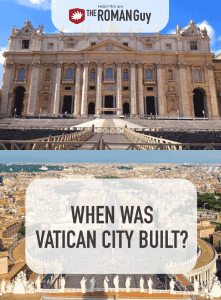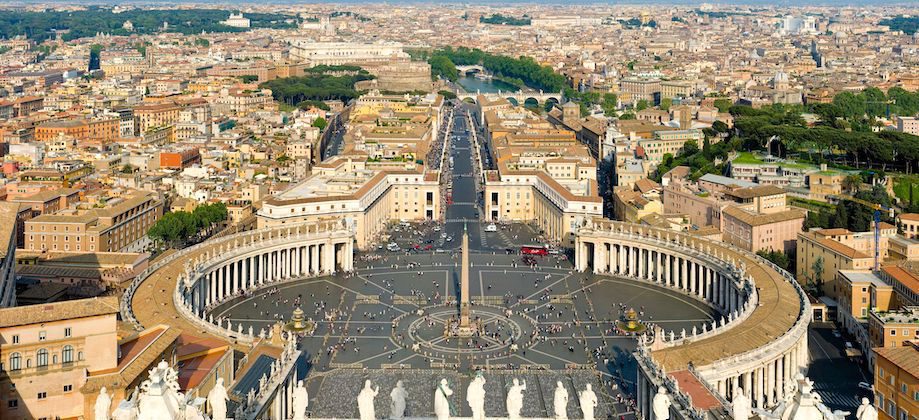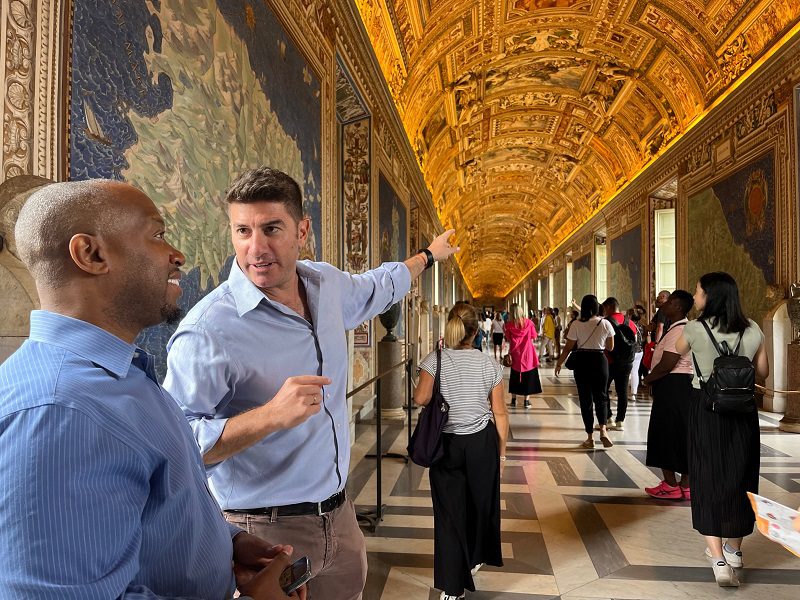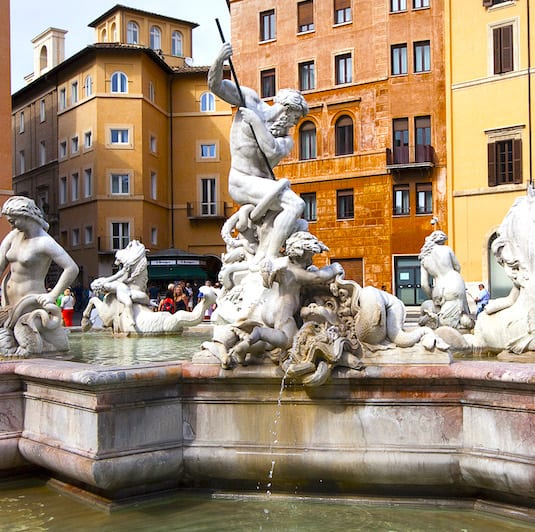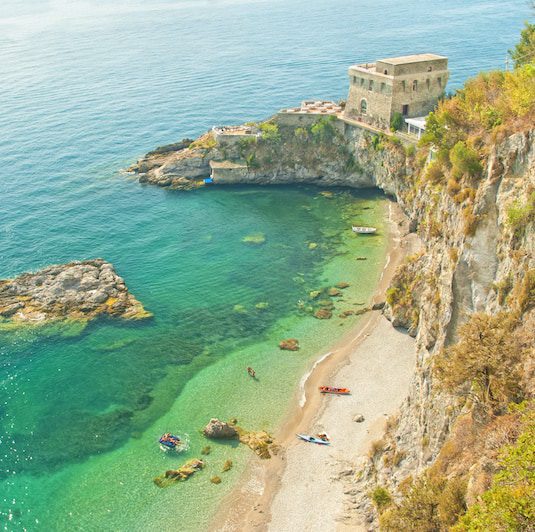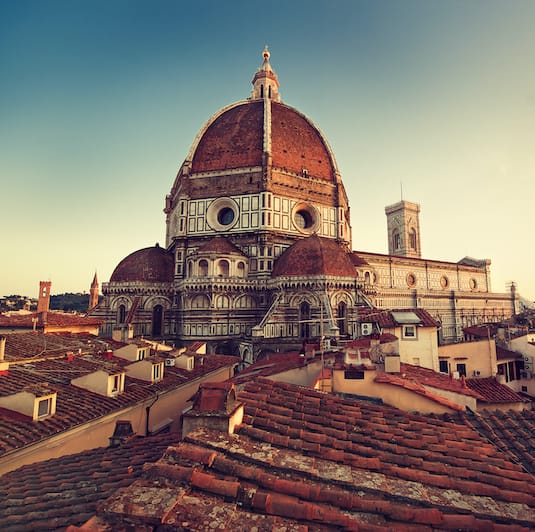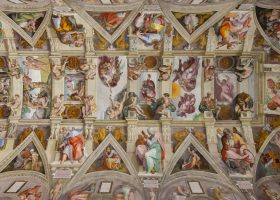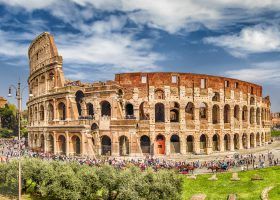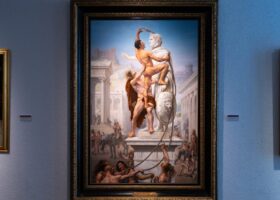Did you know one of our co-founders is a licensed Vatican tour guide? Home of the Vatican Museums, Vatican City is considered its own country apart from Rome. So, when was Vatican City built? In this detailed account from a guide himself, learn about the construction of Vatican City and how it has become the incredible attraction it is today.
Pro Tip: Are you planning on visiting Italy and the Vatican? There is a lot of info here and we tend to forget, so I recommend that you bookmark this page to come back to it later.
When was the Vatican City Built?
As an authorized tour guide of Rome and the Vatican, this is a question I get a lot. Unfortunately, the answer is not so easy and this is why I am writing an entire article about it. However, by the end of this article, if you stick with me, the answer will be as clear as day. There are a few reasons for not such a simple answer:
- The area designated as ” Vatican City” today, is an entity that is not even 100 years old. The current city is everything within the Vatican walls, but they built the walls 500 years ago. Huh? Keep reading.
- People often confuse the Vatican with St. Peters Church and use the terms interchangeably. For our purposes in this article, the term ” Vatican” will denote the entire city as it is delineated today. Any other buildings or features I call them by their proper name ( i.e. St. Peter’s Basilica, Vatican Museums, etc.)
The easiest way in my mind to explain this fully is to start from the beginning.
Why is the Vatican City in Italy?
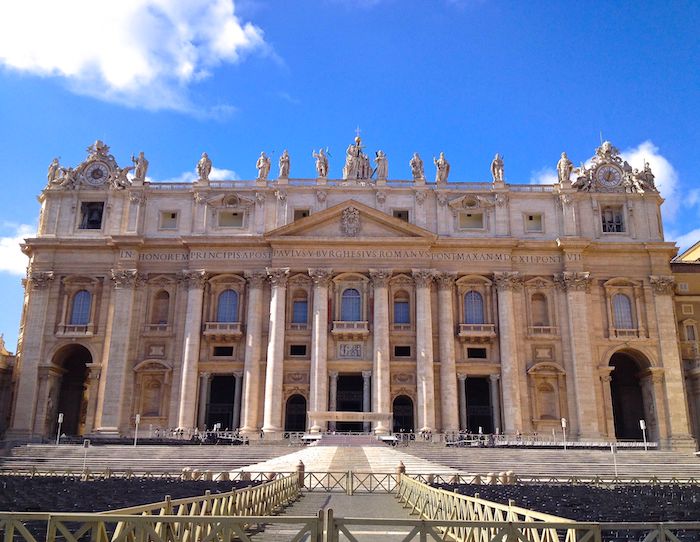
I have read many versions of “why Vatican” and the most likely is that the Etruscan society living in this area referred to it as Vatica prior to it being settled by Romans. It was a marshy area referred to as Ager Vaticanus. There are a lot of other theories which may be correct. It is an old word with many possible routes.
At the beginning of the 1st century AD on the Ager Vaticanus, Emperor Caligula built a circus. A circus in Ancient Roman times was a stadium. Let’s say that this was the private stadium of the emperor. As the legend goes in 64 AD, St.Peter was crucified upside down in Caligula’s circus. A century later the pope Anicetus built a small memorial over his tomb. As a result over the next two centuries, many other Christians chose their burial site close to the memorial.
The Vatican as we know it began under the emperor Constantine. He built the first St. Peter’s basilica called today “Constantine’s St. Peter’s Basilica” which stood where the current Basilica stands today. Jesus gave Simon the name Peter when he first met him and said, “You’re the stone upon which I will build my church.” After Constantine legalized Christianity in 313 AD with the Edict of Milan he got started quickly on building the church Jesus referred to. For Constantine, Jesus would have been as old as George Washington in relative history to us.
The First St. Peter’s Basilica
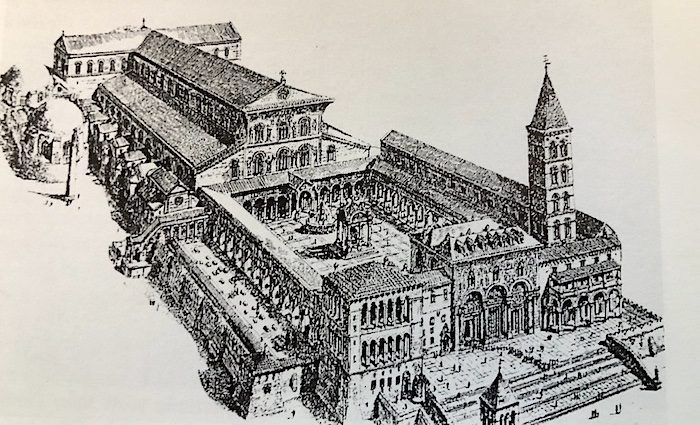
It’s impossible to speak about the Vatican’s history and not include the history of St. Peter’s Basilica. The Vatican’s existence today coincides directly with the church. As mentioned earlier, Constantine built the first church over the supposed grave of St. Peter. According to legend, he personally helped to level the Vatican hill, carrying twelve baskets of earth.
The original Basilica Constantine built lasted from the mid-fourth century AD (the 300s) until 1506. That is a very long time. The current Basilica replaced Constantine’s and while it does not exist today in full form, the current basilica still utilizes foundational elements from the original structure. That means the foundation is nearly 1700 years old!
During the Middle Ages, St.Peter’s Basilica was the main pilgrimage site for Europeans. As a result, pilgrims continued to enrich the church with gold and artwork by the various popes. There were also periods of repeated sackings by foreign invaders.
In 846 AD Pope Leo IV commissioned a 39-foot wall around St. Peter’s and other areas where the clergy lived as a protective measure. The Saracens attacked Rome and caused significant damage to the St. Peter’s Basilica which motivated the Pope to build out defenses. The area, which was larger than the current Vatican City, was proclaimed the Leonine City and stayed that way for some time.
You can still see a piece of this early wall if you walk through the left colonnade of St. Peter’s Square with your back facing the church. A huge wall that contains the famous “passetto” or secret passageway built for the popes to be able to escape their Palace and run to the fortress Castel San Angelo for protection.
Popular Vatican Tours
Best Selling Tour
Privileged Entrance Vatican Tour with Sistine Chapel
Without the right access, visiting the Vatican means fighting crowds, long waits, and missing the most significant rooms and works of art. Our privileged entrance tour offers more than just entry—it’s an immersive experience led by a storytelling guide who brings the Vatican to life. Skip the line and explore the Vatican Museums, including the Raphael Rooms and the Sistine Chapel, with engaging insights that make each moment memorable and meaningful.
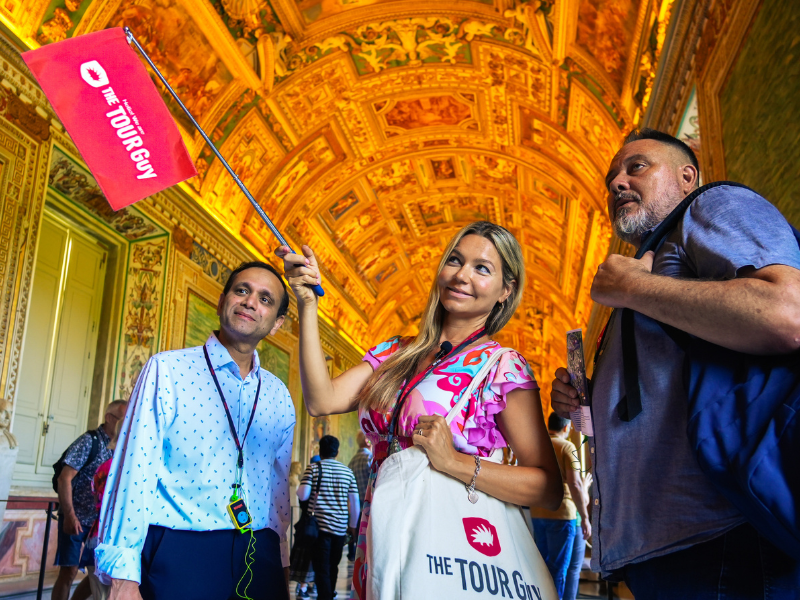
Exclusive Value
Vatican at Closing Time with Sistine Chapel
Exploring the Vatican during the day can mean massive crowds and enduring long lines. With skip-the-line access and an engaging guide, you’ll uncover the captivating stories behind the galleries and enjoy the awe-inspiring beauty of Michelangelo’s Sistine Chapel in a serene setting. Your friendly guide offers a rare perspective, allowing you to experience the Vatican Museums after most visitors have left, making your visit truly extraordinary.
See Prices
The Current St. Peter’s Basilica
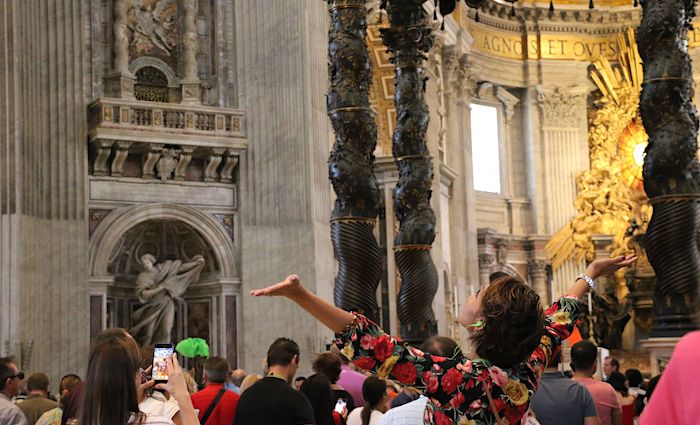
The true glory of the Vatican City occurred during the Renaissance period. However, it was not called the Vatican City at this time. That’s because the “Vatican” was also ruler not only of Rome, but the so-called Papal States which varied in size, but let’s just say the entire central part of Italy was ruled by the pope.
How did he come to rule this huge area? That’s for another time and another blog, but suffice to say that the pope wielded huge amounts of power back in the day as a temporal leader, even raising entire armies and conquering neighboring cities.
Pope Julius II ( 1503-1513) decided it was time for a new Basilica when he appointed Donato Bramante to design the current St. Peter’s Basilica. Bramante’s designs were later taken over by Raphael (the Raphael) a few years later. That said, the current Basilica involved every famous name in Italian art from Michelangelo to father and son Modernos and Gian Lorenzo Bernini.
It took 120 years to build the St. Peter’s Basilica which is pretty impressive considering the magnitude of the structure. There were many works that went on even after that timeline. The last fountain, built by Bernini, was not finished until 1675!
When Was Vatican City Recognized as Its Own State?
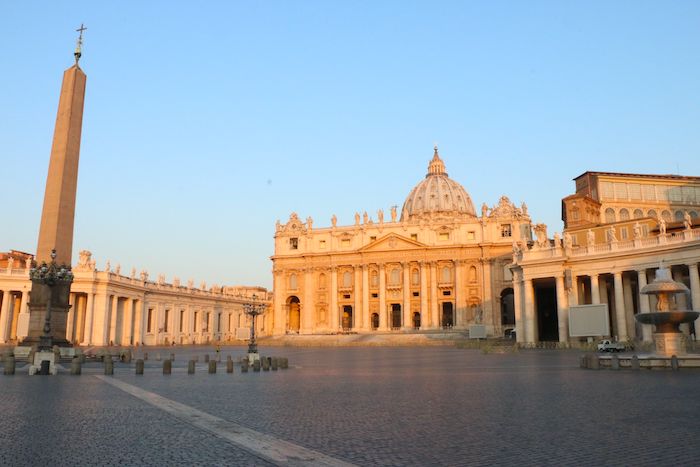
The papal states explained above came to an end towards the end of the 19th century. Italy wanted to unite as a country and not a mix of different republics and kingdoms. Rome was overtaken by generals and soldiers of the “Risorgimento” or uprising and the pope, defeated, retreated to within the walls of what we now consider the “Vatican City.”
These so called walls are the gigantic walls we see today that surround the entire city. Pope Pius IV (1559-1565) commissioned the walls to better protect the city in the 16th century.
In 1870 Italy was unified under the leadership of Italian-American Giuseppe Garibaldi. The government of the newly defined Italy allowed the Pope to keep a small track of area under sovereignty. Pope Pius IX would not agree to terms until 1929 when the Lateran Treaty was signed under Benito Mussolini which granted the Vatican sovereignty. The sovereignty extends past the Vatican City to other churches including the Basilica of St. John Lateran in Rome.
Vatican City Facts
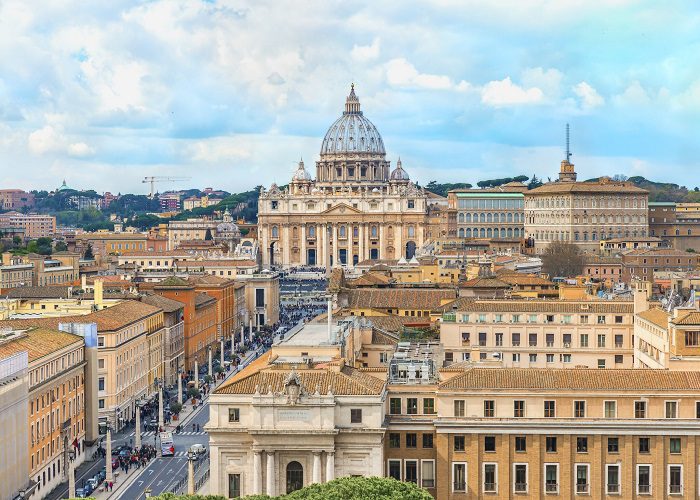
Population: The population today is about 800 with 450 people holding an actual Vatican City passport.
Vatican City Flag: They have their own flag, which is yellow and white with the keys of St. Peter and papal tiara on the white side.
License plates: If you happen to be in Rome and see a license plate that starts with SCV (Status Civitatis Vaticanae), then you know it belongs to the Vatican State.
Vatican Radio: The Radio Vaticana was set up in 1931 by Guglielmo Marconi. Today it broadcasts in over 47 languages and is maintained by the Jesuit Order
Vatican Newspaper: The Osservatore Romano is the official daily newspaper of the Vatican City. Its first issue date was 1861.
Frequently Asked Vatican Questions
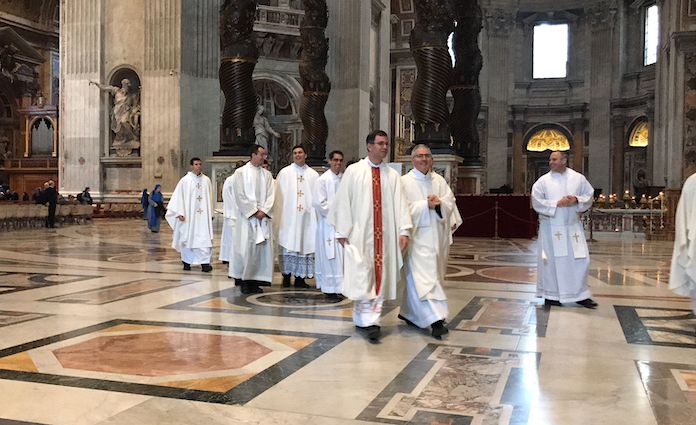
As an official tour guide of the Vatican, I get asked many interesting questions that range from the silly to quite deep. Some examples?
- Are those pagan statues around St.Peter’s Church? No, the statues around St. Peter’s church are of saints and martyrs
- Is this where they crucified Jesus? No, Jesus was crucified in Jerusalem.
- Why is nobody born in the Vatican? As you can imagine, with. a city full of celibate priests and nuns, they have the lowest birthrate in the world- Zero!
- What is the Vatican famous for? The Pope!
Here’s Where To Stay in Italy’s Most Popular Destinations
Rome, Florence, Venice, Amalfi Coast, and Capri
I Want More Italy!
- Check out our YouTube video and step-by-step guide about how to do Rome in a Day. If you’d rather let us guide you, check out our Rome tours.
- Not sure where to stay in Rome? Read this guide!
- Follow our adventures in Italy on Facebook, Instagram, and YouTube. Then, comment and tell us what you want us to cover next.
